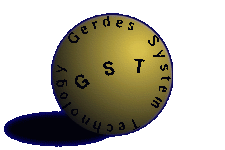ASM The Advanced Sandlevel Meter

ASM The Advanced Sandlevel Meter |

|

The idea to use optical backscatterance for sediment density measurements
is known for a long time.
It was shown that, given a sediment of known type, concentration measurements
can be performed. In our application, the focus is on the sand level changes
that are extracted by observing the kink in the sediment density graph
(See ASMA). The principle was studied by my partners (Argus) using standard embedded control hardware. Although results were promising, associated hardware problems like too little memory and too much power consumption could not be solved. My task was to do the complete redesign of the electronics. I chose the Microchip PIC16C74 as the central processor. The processor incorporates many useful features for this design while consuming only minimal power, we lowered the consumption even further by using the processor's sleep mode. Helpful features are: a high speed RISC core, a Real Time Clock, an SPI interface, a serial interface and many output ports to interface to memory and measurement hardware. The on chip 8 bit A/D converter is reserved for future use, we're using a Maxim 12 bit converter for higher accuracy. This device integrates seamlessly through the SPI interface. We use between 64 and 128 standard reflexive opto couplers for the backscatterance measurement. To achieve optimal power efficiency and data quality the measurement time is minimal (15uS) while the IR-LED current is almost 1 amp. The line of sensors is clearly visible in the picture. The shown prototype was later revised to reduce the head diameter by a factor of 2 in order to improve stability in high current environments. The people at Argus look back on many years of ocean measurement experience. They solved all the mechanical problems involved with sea floor measurements. Solved problems include: pressure resistance up to 70 psi (50m depth), strength against mechanical stress, stability of optical parameters, corrosion prevention, to name just a few. The instrument is hermetically sealed, communication with a PC is made possible through an optical interface. For measurement results please check the ASMA page.
For further information on Microchip micro controllers that are highly versatile for
a variety of applications while consuming only minimal quiescent power, check the
Microchip home page: |
|
Gerdes Systemtechnik
Mühlgraben 5 D-09669 Frankenberg Germany |
Phone:
Fax: |
xx49-37206-6009-20
xx49-37206-6009-24 |
|